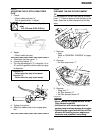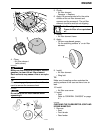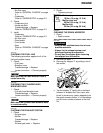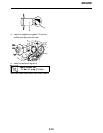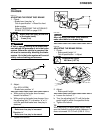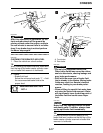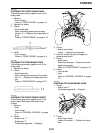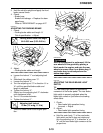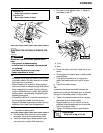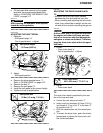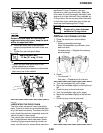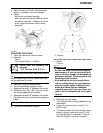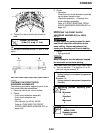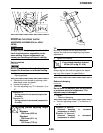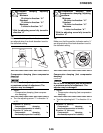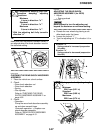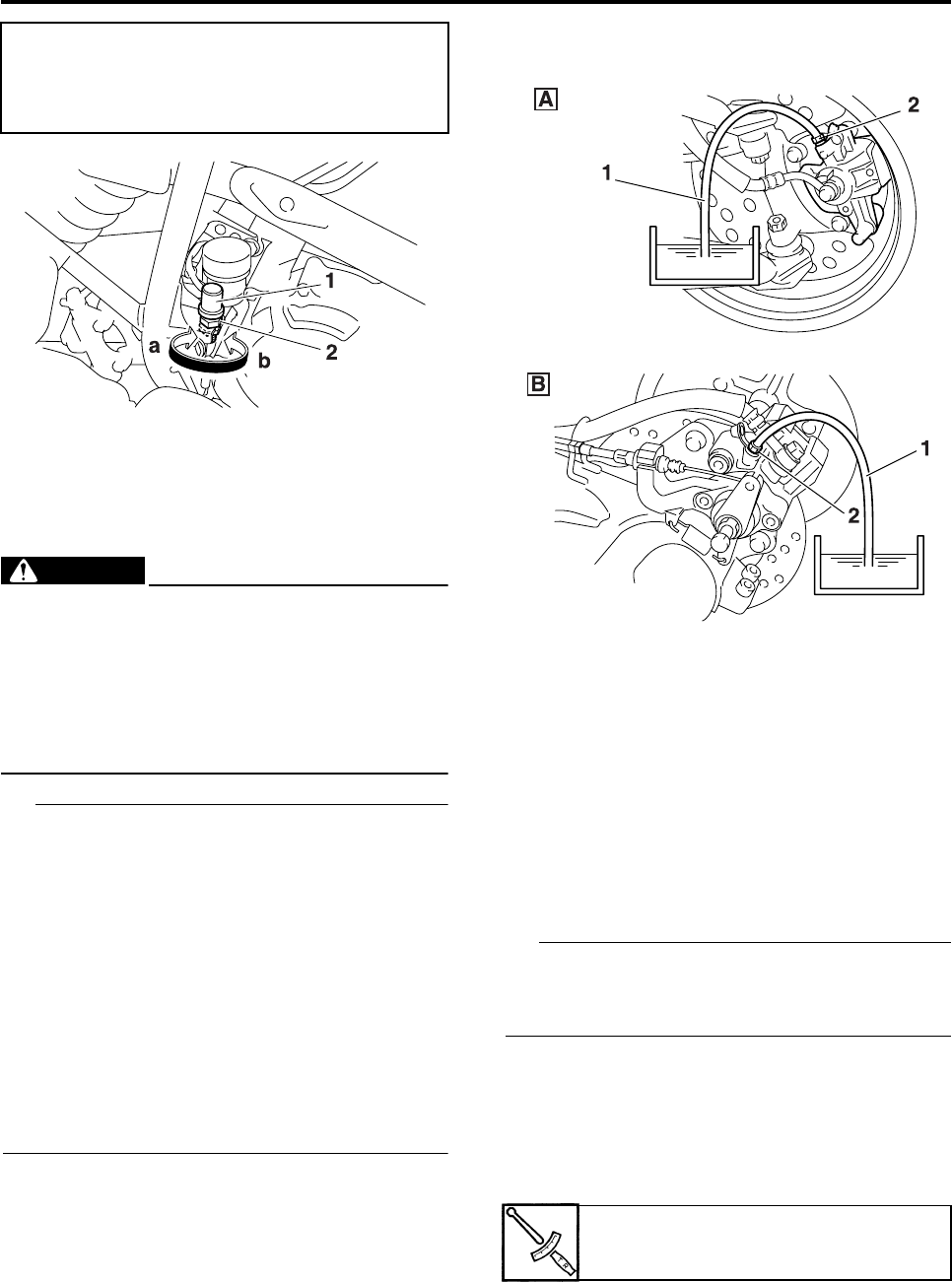
CHASSIS
3-20
▲▲▲▲▲▲▲▲▲▲▲▲▲▲▲▲▲▲▲▲▲▲▲▲▲▲▲▲▲▲
EAS21350
BLEEDING THE HYDRAULIC BRAKE SYS-
TEM
WARNING
EWA13100
Bleed the hydraulic brake system when-
ever:
• the system is disassembled.
• a brake hose is loosened, disconnected
or replaced.
• the brake fluid level is very low.
• brake operation is faulty.
TIP
• Be careful not to spill any brake fluid or allow
the brake master cylinder reservoir or brake
fluid reservoir to overflow.
• When bleeding the hydraulic brake system,
make sure there is always enough brake fluid
before applying the brake. Ignoring this pre-
caution could allow air to enter the hydraulic
brake system, considerably lengthening the
bleeding procedure.
• If bleeding is difficult, it may be necessary to
let the brake fluid settle for a few hours.
Repeat the bleeding procedure when the tiny
bubbles in the hose have disappeared.
1. Bleed:
• Hydraulic brake system
▼▼▼▼▼▼▼▼▼▼▼▼▼▼▼▼▼▼▼▼▼▼▼▼▼▼▼▼▼▼
a. Fill the brake fluid reservoir to the proper
level with the recommended brake fluid.
b. Install the diaphragm (brake master cylin-
der reservoir or brake fluid reservoir).
c. Connect a clear plastic hose “1” tightly to
the bleed screw “2”.
d. Place the other end of the hose into a con-
tainer.
e. Slowly apply the brake lever or brake pedal
several times.
f. Fully pull the brake lever or fully press
down the brake pedal and hold it in posi-
tion.
g. Loosen the bleed screw.
TIP
Loosening the bleed screw will release the
pressure and cause the brake lever to contact
the grip or the brake pedal to fully extend.
h. Tighten the bleed screw and then release
the brake lever or brake pedal.
i. Repeat steps (e) to (h) until all of the air
bubbles have disappeared from the brake
fluid in the plastic hose.
j. Tighten the bleed screw to specification.
Direction “a”
Brake light comes on sooner.
Direction “b”
Brake light comes on later.
A. Front
B. Rear
Bleed screw
6 Nm (0.6 m·kg, 4.4 ft·lb)



